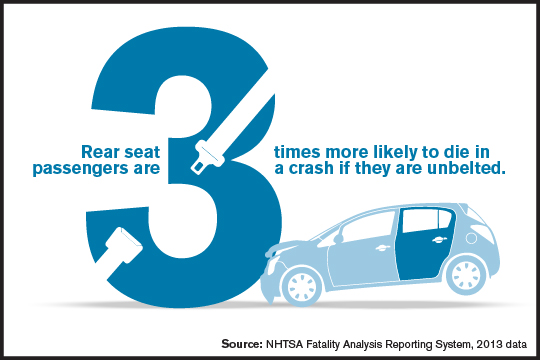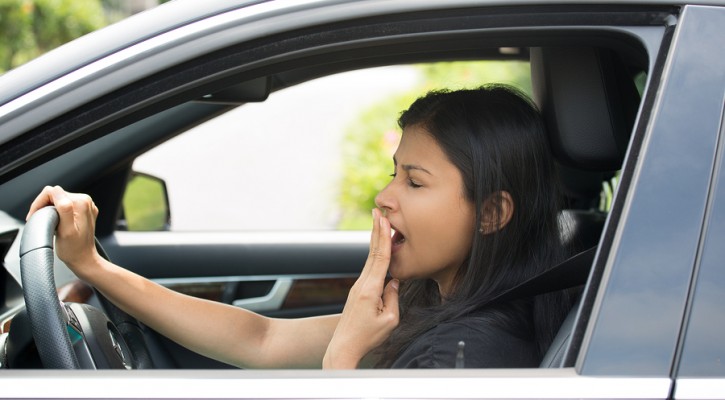Tag Archive: Driving Safety

A Christmas Gift For Safer Driving
December 8, 2015
If you’re looking for Christmas gift for someone who’s hard to buy for, you may want to consider a gift that’ll contribute to their safety on the road. It’s a gift that says “I love and care about you” and it’s practical at the same time. Here are some gifts you might want to consider, especially for those who have small children.
Backup cameras
Backup cameras are a great gift for someone who has small children or may drive and park in areas, such as schools, where small children may be present. Backup cameras eliminate blind spots in the rear and give the driver a full view of the area directly behind the vehicle where small children are easily missed. Backup cameras are very economical and can be easily installed by someone with minimal mechanical skills. For more info visit: https://youtu.be/Z2DEanjr7ZE?t=145
Child seats
If you know someone who’s expecting or whose child may be outgrowing their car seat, this can be an excellent gift. Remember that child seats have an expiration date and parents should avoid getting a used car seat for their child. Exposure to the sun and heat in a car over time can cause the synthetic fabrics used in the belts to wear down and become weak.
For newborns, get a rear-facing car seat.
Convertible seats can be used as rear-facing seats for newborns and can then be shifted to face forward for toddlers.
Children are often graduated to seat belts way too early and that’s dangerous for them. For toddlers who’ve outgrown their car seat, get a booster seat that will allow the child’s seat belt and shoulder harness to fit properly. Kids should stay in booster seats until they’re at least 4’9” tall.
For info on the best car seats, visit: http://www.consumerreports.org/cro/car-seats.htm
For info on the best booster seats, visit: http://www.iihs.org/iihs/sr/statusreport/article/50/9/1
Tires
Everyone needs a new set of tires now and then. If you’re wondering whether or not it’s time to get a new set of tires, do the Abe Lincoln test. Take a penny and with Abe Lincoln’s head showing, stick it head-first between the treads. If you can see the top of Abe’s head, the tires are worn too low and need to be replaced.
Dash cams
While they don’t really directly contribute to driving safety, a dash cam can help a driver prove who was at fault in a crash. That can save a lot of money and heartache over the long run. Dash cams have come way down in price and are easy to install. Make sure you get one with enough memory capacity to cover a long period. Get one with an impact detector that will save the file after it feels an impact. You can also get a combination dash cam and backup camera that uses the rearview mirror as a screen. For more info, visit: http://www.cnet.com/videos/car-tech-101-dashcams/

Rear Seat Adult Passengers Fail To Use Seat Belts
November 23, 2015
In February of this year, 60 Minutes correspondent and CBS newsman Bob Simon, was riding as a rear seat passenger in a livery cab when it was involved in a crash. Simon, who wasn’t wearing a seat belt, received massive head and torso injuries and died shortly after being taken to a hospital.
The Governors Highway Safety Administration (GHSA) says that too many adults riding in the rear seat fail to wear a seat belt and almost half of those who were killed in crashes could have survived had they been wearing a seat belt. According to a report by the GHSA, in 2013, 883 unrestrained rear seat passengers age eight and older were killed in crashes. The GHSA estimates that more than 400 of them would have survived if they had been wearing a seat belt.
The GHSA report places a lot of the blame for the lack of seat belt use among rear seat passengers on the states for failing to pass strict seat belt laws that require all occupants of a motor vehicle to use seat belts; no matter where they are seated. Only sixteen states and the District of Columbia currently have primary seat belt laws that require everyone in the vehicle in both the front and rear seat to be buckled up at all times. Ten states have secondary laws requiring rear seat seat belt use but those laws can only be enforced if the driver is stopped for another “primary” traffic offense. Some states have a mix of primary front seat and secondary rear seat laws. Twenty-two states, including Florida, have no laws at all requiring the use of seat belts by adults in the rear seat.
Among the states with stricter rear seat seat belt laws, seat belts are used by approximately 83 percent of adults in the rear seat while in states with no rear seat laws, only 74 percent of adults use seat belts. There is a direct correlation between state seat belt laws and use of seat belts by adults in the rear seat.
Even if they have primary seat belt laws for all seating positions, some states, including New York, don’t require rear seat passengers in taxis or cars-for-hire to wear seat belts. In the case of Bob Simon, he wasn’t required by law to wear a seat belt but many feel he would have survived the crash if he had been wearing one.
Adults who don’t use seat belts in the rear seat often aren’t the only ones killed or injured in a crash. Even those in the front seat who are using seat belts can be killed in a crash when they’re struck by the rear seat adult’s body as it flies forward and bounces around the interior of the vehicle.
The GHSA calls on states to enact strict, primary seat belt laws requiring all passengers, including those in the rear seat to wear a seat belt at all times. Even if your state doesn’t require the use of seat belts by adults in the rear seat, it’s always a good idea to wear one. Seat belts save lives.
Read more: http://www.ghsa.org/html/publications/spotlight/rearbelts2015.html

Hurricane Or Tropical Storm – Plan Ahead
August 28, 2015
While we’ve dealt with a tropical storm or two over the past few years, Florida hasn’t been hit by a hurricane in ten years. That means that a lot of people may have forgotten what it’s like to go through a hurricane and may not realize the full dangers a storm like that can pose. It’s too early to tell whether the current tropical storm Erika may develop into a hurricane but even if it remains as a tropical storm, the high winds and torrential rains can still be deadly and current models have it passing over Florida or just off the coast.
Leave Early!
If you chose to evacuate ahead of the storm, leave early! Those who remember evacuating the state as hurricane Floyd neared in 1999 may remember the nightmare on the roads as 2.6 million people tried to evacuate from coastal Florida, Georgia, and the Carolinas. At that time, Florida emergency management people were ill prepared for the numbers of people evacuating and traffic was stop-and-go from south Florida to central Georgia. One lesson learned from that storm was to close all lanes of the interstates to inbound traffic and open all lanes to outbound traffic going in one direction only.
For those in coastal areas, leaving early is critical because there will come a point in the storm when all bridges and causeways will be closed due to high winds and people who delay leaving will be stuck where they are.
Plan Ahead
If you plan to evacuate, plan ahead. With heavy stop-and-go traffic on the interstates, you may spend hours traveling between exits. To prepare for that:
- Fill your tank with gas before you leave and don’t let the tank go below half full if you can avoid it.
- Gas stations, restaurants, and stores may be overwhelmed and quickly run out of supplies.
- Take water and snacks with you.
- Withdraw cash ahead of time; with power outages, ATMs may be out of service.
Cell phone service may be disrupted. If members of your party in separate vehicles get separated:
- Select a place to meet ahead of time.
- Select an out of town family member to contact and let them know you’re OK.
Beware of flooding; especially after the storm has passed.
Even after the worst part of the storm has passed, flooding will be an issue as water rushes into creeks and rivers and they start to rise. In recent years, tropical storm flooding has washed out roads and bridges.
If there’s standing or rushing water over the road:
- You can’t tell what the road may be like underneath; it could be washed away or it could collapse under the weight of your vehicle. Turn around and find another route.
- Less than an inch of water can cause a driver to lose control.
- As little as six inches of rushing water has enough force to push your car off the road.
- Your car can float in as little as two feet of water and you could be washed away into a flooded stream or river.
Be Patient
Traffic in the evacuation zones will be heavy and drivers will be stressed:
- Remember that no one has the right-of-way; you can only give up the right-of-way to another driver.
- If another driver insists on taking the right-of-way, give it to them; it’s not worth getting into a fight over a few seconds of your time.
- If you encounter a road rage situation, do not confront the other driver. Keep your doors and windows shut and try to exit the situation as quickly as possible.
- Remember that emergency services will be overwhelmed and you may not be able to call 911 for help.
For help in planning, visit: Get A Plan

Hidden Sleep Disorders Can Be Dangerous
August 24, 2015
A new Institute of Medicine report points out the health and safety dangers posed by undetected sleep disorders. According to medical experts, hidden sleep disorders can lead to cardiovascular problems, diabetes, and possibly Alzheimer’s. Especially dangerous are the dangers of industrial accidents and motor vehicle crashes caused by drowsy driving.
Many people in their 50’s to 60’s could be suffering from one or more of these hidden sleep disorders and simply attribute their sleepiness to advancing age. Individuals with sleep disorders may also be in denial because they don’t have any of the risk factors such as alcohol use or smoking.
While driving, lack of sleep can lead to a lack of concentration on the road ahead. In many cases, drowsy driving can cause what is known as a micro-sleep, where the driver nods off for a second or two. A second or two may not seem too bad until you consider that, at highway speeds, a car can travel almost 200 feet in two seconds. A second or two is long enough to drive into another lane or off the road.
A 2014 study by AAA found that drowsy driving was responsible for 21 percent of fatal crashes and the deaths of an average of 6,400 people per year.
Without any obvious symptoms reported by the individuals or spouses, the only way to diagnose these hidden sleep disorders is through a sleep study in a specially designed sleep lab. In these labs, subjects spend the night in a soundproof, totally dark room while their brainwaves, respiration and other signs are monitored by staff in a central control room.
If an obstructive airway is diagnosed as the cause of these sleep disorders, a Continuous Positive Airway Pressure (CPAP) machine is often prescribed. However, many don’t like the idea of sleeping while wearing a mask and hooked by hoses to a noisy machine. For those who resist that idea, there are alternatives such as surgery to open up the airway or an appliance worn inside the mouth that pushes the lower jaw forward.
For others sleep therapy can be as simple as changing lifestyle habits such as watching alcohol intake, staying up too late, or watching TV in the bedroom.
Doctors advise that, if you feel sleepy during your normal wake hours on a regular basis, you may be suffering from one or more of these sleep disorders. The study’s authors advised medical practitioners to consider lack of sleep and question their patients on their sleep habits as part of their routine diagnostic process.
Read more: Snooze Alert: A Sleep Disorder May Be Harming Your Body And Brain

Time To Stop Red Light Running
August 5, 2015
August 2 – 8 is Stop On Red week and it’s a good time to stop and think about the costs of red light running. The summer vacation period is drawing to a close, Labor Day is around the corner and within the next couple of weeks, children will be returning to school. It’s time to evaluate if the time saved running a red light is worth the cost.
According to the Insurance Institute for Highway Safety (IIHS) 697 people were killed and an estimated 127,000 were injured in red light running crashes in 2013. About half of the deaths in those crashes were pedestrians, cyclists, and occupants of other vehicles that were hit by red light runners.
An IIHS study of urban crashes showed that the most common type of urban crash (22 percent) involved drivers who ran red lights, stop signs or other traffic controls. Injuries occurred in 39 percent of the crashes caused by red light runners. Drivers are more likely to be injured in a red light running crash than in any other type of urban crash.
Red light running has become an epidemic in the US. An IIHS study of 19 intersections without red light cameras in four states showed that drivers run red lights an average of 3.2 times per hour.
The National Coalition for Safer Roads (NCSR) conducted a study of red light running in the US and produced a list of the ten most dangerous cities for red light running. Those cities are:
- Houston, TX
- Phoenix, AZ
- Los Angeles, CA
- Las Vegas, NV
- Chicago, IL
- Miami, FL
- Dallas, TX
- Philadelphia, PA
- Tucson, AZ
- Denver, CO
If you want to know how bad the red light running problem is in your area, the NCSR has produced an interactive map that shows all the red light running deaths in the US between 2004 and 2013. You can choose a city to view or you can zoom in to your locality and see how many red light running deaths occurred where you live. To view the map, visit: Red-Light Running Fatality Map
To learn more, visit: Stop on Red Week 2015
